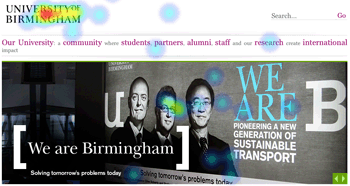What makes a website trustworthy? How Learning & Development providers can positively influence their website's trust perception
During the past months Springest.co.uk and Usabilla.com have investigated web users' trust perceptions of Learning & Development provider websites in the UK. It turned out that a few details can make a big impact on perceived trustworthiness.
The test was spread throughout various social networks asking participants: "What makes you trust this website?" According to BJ Fogg, Ph.D. at Stanford University, perceived website trustworthiness combined with perceived expertise has a major impact on perceived credibility, which is important for user attitudes and user behavior, and therefore very important for the success of a commercial website.
Deriving from the test outcomes it appears that trust in a website develops on two levels; i.e. the visual level and the content level.
A classic and professional logo plays an important role for the first impression of a website's trustworthiness. A major influencer on the visual level is the choice of pictures. Participants stated that pictures should be real rather than coming from stock photography websites:
"Looks like it's a picture from their campus, not just generic.. it gives the idea of truthfulness and trust"
Pictures seem to build the bridge between the visual level and content level of a website. This assumption is supported by BJ Fogg's first guideline for designing credible websites* and participants stating that pictures need to match the message of the website:
"I don't find anything to help me trust this page. Especially this model's smile doesn't help"
The test outcomes indicated that the following items are important for the trust perception on the content level:
- Testimonials (reviews)
- Accreditations
- Most popular courses
- Up-to-date agenda and news
- Easy to find contact details
*BJ Fogg, Ph.D., 10 Guidelines for Designing Credible Websites: "The visual design should match the site's purpose." What makes a website credible.
Testimonials displaying experiences of former delegates or current partners provide visitors with an independent opinion building up their expectations towards the L&D provider. Accreditation seems to play the role of the official external reassurance of the provider's quality, competence and expertise. Finding a list with most popular courses was perceived positively as it communicates there is demand for courses and some kind of a popularity. Moreover participants stated to prefer websites with up-to-date agendas and news giving them the impression that someone is taking care of the site.
"Latest news is a great way to keep fresh new content going."
However, it seems that the greatest need to perceive a website as trustworthy, is the need to easily get in contact with the L&D provider, which is also substantiated by BJ Fogg's 6th guideline, i.e. "Make it easy to contact you".
"..easy to find contact information, digging around for it makes me wonder why it's hidden."
Summing up, as a Learning & Development provider you can positively influence the trust perception of your website by covering these 7 aspects:
1. Give good thought to your logo and how it will be perceived by your targeted visitors.
2. Use real pictures, representing your business and matching your message.
3. Display partner and customer testimonials to demonstrate how satisfied others are with your business.
4. Show your accreditations. It assures visitors of your quality standards.
5. Provide a top 3 of the most popular courses.
6. Keep your agenda and news up-to-date.
7. Be transparent and make your contact details easily accessible to visitors.
Ultimately a high level of perceived credibility should be the objective of a website design in order to increase user activities, online conversions and user retention.


